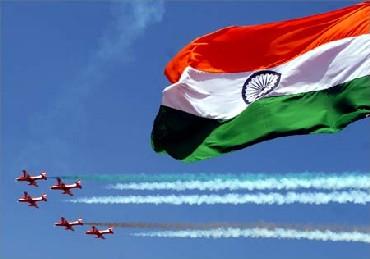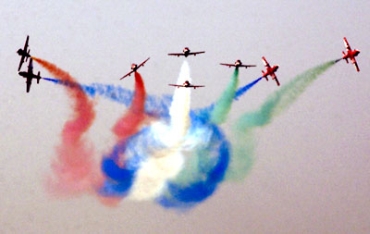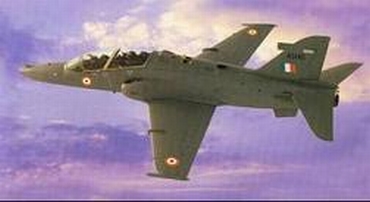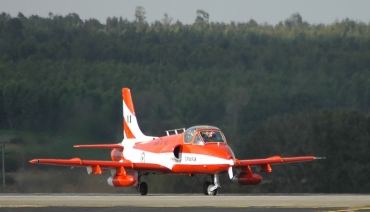
The Indian Air Force's vaunted aerobatics display team, the Surya Kiran Aerobatics Team, could soon be enthralling spectators with cutting-edge aircraft. The IAF has initiated the procurement of 21 additional Hawk aircraft, built by Hindustan Aeronautics Limited, Bangalore.
Hawk advanced jet trainers would allow SKAT to fly faster, turn tighter and manoeuvre more spectacularly, than was possible with the vintage Kiran Mark II trainer aircraft that they have flown since 1996.
With the additional Hawk procurement underway, HAL Chairman Ashok Nayak said HAL would build another 21 Hawks as soon as it completes the 123 aircraft, ordered by the IAF and the Indian Navy.

"The IAF has initiated the follow-on procurement of 21 additional Hawks from BAE Systems. These are mainly for its aerobatics team, but also to replace the couple of Hawks that have been lost in crashes," says Nayak.
The SKAT, highly regarded despite the old aircraft it performs in, is one of the few aerobatics teams that fly nine aircraft in close formation. To stage its heavy and technically demanding routine of nine-aircraft performances, the SKAT is authorised 18-19 aircraft.
The only other military aerobatics teams that fly nine-aircraft formations are the United Kingdom Royal Air Force's Red Arrows, which also fly the Hawk; and the Snowbirds, from the Royal Canadian Air Force.
Other aerobatics teams perform with fewer aircraft. The Thunder Birds (US Air Force), with six aircraft; Blue Angels (US Navy), with six aircraft; the August 1st Aerobatics Team (China's People's Liberation Army Air Force, or PLAAF), with six aircraft; and the Patrouille de France (French Air Force), with eight aircraft.
The Russian Knights (Russian Air Force) have flown varying numbers of aircraft, but never nine.
For the pilots of SKAT, the transition to Hawks represents a generational shift. Before SKAT was formed with the Kiran Mark II in 1996, another IAF aerobatics team, "The Thunderbolts", flew the Hawker Hunter fighter.
The Thunderbolts, too, performed nine-aircraft routines. Besides the advantages of switching to the Hawk, the withdrawal of the Kiran Mark II from SKAT is driven by another pressing reason: the IAF's shortage of trainer aircraft.

The entire IAF fleet of HPT-32 Deepak basic trainers has been grounded since July 2009, after 19 pilots died in 17 Deepak crashes over the years.
Today, IAF rookies are herded for their first flying lessons into the relatively complex Kiran Mark I aircraft. For the next stage of intermediate training, the IAF requires all the Kiran Mark IIs that it can muster. In the circumstances, maintaining an entire squadron (the SKAT team comprises the IAF's No 52 squadron) for aerobatics seemed unjustifiable.
But given SKAT's glamour quotient, the IAF is keen to get it back in the air. Air Chief Marshal NAK Browne has demanded the team starts performing again in their new Hawks within three years.

Going by HAL's projections, that seems unachievable. HAL is projected to finish building IAF's first order of 66 Hawks (contracted in 2004 for Rs 6,600 crore) by mid-2012. Thereafter, 57 more Hawks have to be manufactured for the IAF and the Indian Navy as per a Rs 5,500 crore contract signed last year.
"Next year we will build 13-14 Hawks; and then step up production to 19 Hawks from 2013 onwards. That means 57 Hawks will be delivered by late 2015. Then we can build 21 more Hawks by the end of 2016," says Nayak.
For the struggling UK aerospace industry, that opens an intriguing prospect: will the IAF insist on building its latest order of 21 Hawks in the UK, arguing a pressing need to get the SKAT performing again? Industry sources say, given the recent budget cuts in the British aerospace industry, this would be a welcome proposal.